

Maurer, Szabadka and Fruška Gora, Serbia
We aspire to be as natural and authentic as possible in the production of grape and wine, and the wines born in this spirit tell a lot about their production site, yet every drop of wine contains our family’s history, and the last 3000 years.” — Oszkár Maurer

At a Glance
http://www.maurer.rs/
Szabadka and Fruška Gora
Sub-Mediterranean
Sand, volcanic and sedimentary rocks
90m to 270m above sea level
Sandy hills and also steep slopes facing the Danube
Mézes Fehér, Bakator, Kövidinka, Szerémi Zöld, Rhine Riesling, Tamjanika, Olaszrizling, Slankamenka, Hamburg Muscat, Ezerjó, Vadfekete, Furmint, Kadarka, Pinot Noir, Cabernet Sauvignon, Kékfrankos
15 hectares
Organic
Natural
Szabadka and Fruška Gora
Sub-Mediterranean
Sand, volcanic and sedimentary rocks
90m to 270m above sea level
Sandy hills and also steep slopes facing the Danube
Mézes Fehér, Bakator, Kövidinka, Szerémi Zöld, Rhine Riesling, Tamjanika, Olaszrizling, Slankamenka, Hamburg Muscat, Ezerjó, Vadfekete, Furmint, Kadarka, Pinot Noir, Cabernet Sauvignon, Kékfrankos
15 hectares
Organic
Natural

Oszkár Maurer
The people
When we first visited Oszkár Maurer in 2015, we had to meet just over the border in Hungary at a restaurant because our rental car wouldn’t allow us to enter Serbia. Insert politics here. He only had a few wines to show and it was more about what’s to come than what he had at that moment. Since then we’ve visited multiple times, walked through his Kadarka planted in 1880 among many other incredible vineyards from the turn of the century, and his wife Irene has cooked some of the best food on any of our trips.
We’ve also witnessed his plans from 2015 come to life. Plans like expanding his production into the Fruška Gora, opening a tasting room/restaurant, and redefining what many of these nearly forgotten grapes taste like. Despite all the new things, he’s always keeping a close eye on the traditions of both his grandparents and the region's 2000+ years of documented winemaking history.

Eric and Oszkár holding a piece of the 1880 Kadarka
Five years later he has more SKUs than we can count, experiments abound, and every single core wine is better. Where before all his labels were the same, now many of his labels feature the art of children from his village (ie Kövidinka) and or reflect his fascination with the cosmos (ie Orion). His aesthetic and philosophy are starting to permeate everything above and beyond the vineyards and cellar.
The Maurer family has been producing wine for four generations. It was during the Austro-Hungarian Monarchy in the 19th century that they moved from Salzburg to the southern part of the Kingdom of Hungary. They now farm 15 acres of land. 6 hectares in the Serbian wine region of Szabadka directly south of the Hungarian-Serbian border, and another 10 acres in the Fruška Gora mountain district in Syrmia, Serbia, located 40 miles away from Belgrade and bordered by the Danube River to the north.
For many years, Oszkár has also been helping other regional winemakers get their productions off of the ground in terms of mentorship, using equipment, storage and ultimately fostering a larger community of like-minded people to do something special.

Vineyards
Technically Maurer is in the Subotičko – Horgoškoj region in northern Serbia, but it was formerly a part of Hungary’s Csongrád up until 1920. The population is mostly Hungarian and viticulture knows no borders, the grapes see no line in the sand. Names of grapes and places are therefore constantly changing from Serbian to Hungarian and vice-versa. Everything should be considered interchangeable and fluid. Oszkár farms about 6 hectares here including the oldest known Kadarka vineyard in the world planted in 1880 in addition to other plantings in 1912 and older plots of Kövidinka from 1925. The rest of the plantings include grapes like Olaszrizling, Slankamenka, Ezerjó, Kadarka and Kékfrankos. There’s also a smattering of international varieties including Cabernet Sauvignon, Merlot and Pinot Noir as well.
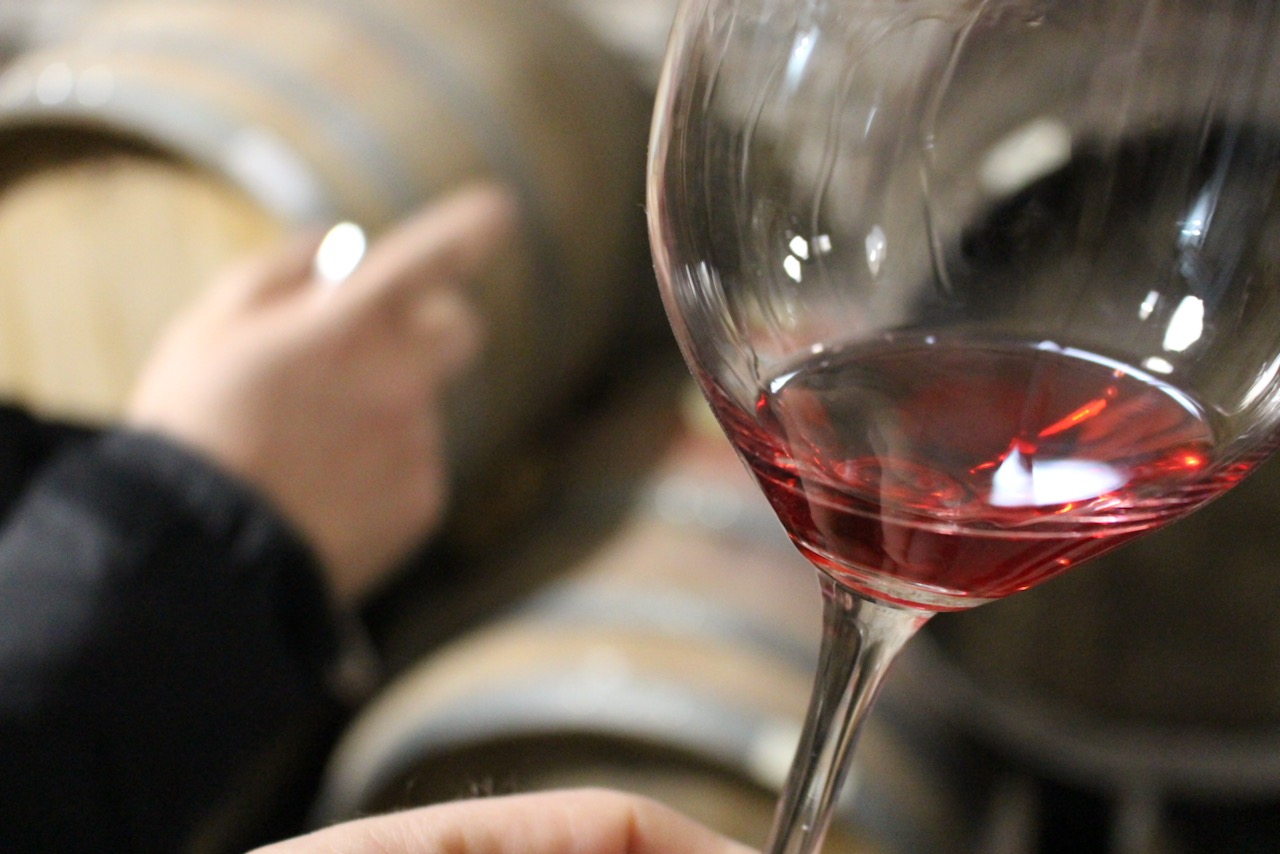
Old Kadarka vine
Oszkár also has 9 hectares in the Srem region a little further south. Hungarians called this area Szerém, the Croatians Srijem (part of it still spills into Croatia), and long before that the Romans called it Syrmia. The Roman Emperor Probus was born here and devoted a lot of his time to growing grapes. Illyrians and Celts lived here as well. The main feature, apart from the Danube River, is the Fruška Gora Mountain. Once an island in the Pannonian Sea, the soil is volcanic with a marine layer. Some call it the “holy mountain” or “Serbian Athos” because at one point there were over 30 monasteries of which 16 still stand today. It’s also the first national park in Serbia. Needless to say, there is something special about this place and winegrowing is documented back to the 1200s.
Painting in broad strokes, the Subotičko is largely defined by sandy soils and old vines, and the Szerémség by volcanic soils heavily influenced by the Danube River. Everything is farmed organically with zero absorbable chemicals. High density stake trained vines are the most typical and cover crops are natural. Everything is worked by hand or with the help of horses. Harvest is managed with local labor and the help of family and friends.

Old Kadarka vine
Oszkár also has 9 hectares in the Srem region a little further south. Hungarians called this area Szerém, the Croatians Srijem (part of it still spills into Croatia), and long before that the Romans called it Syrmia. The Roman Emperor Probus was born here and devoted a lot of his time to growing grapes. Illyrians and Celts lived here as well. The main feature, apart from the Danube River, is the Fruška Gora Mountain. Once an island in the Pannonian Sea, the soil is volcanic with a marine layer. Some call it the “holy mountain” or “Serbian Athos” because at one point there were over 30 monasteries of which 16 still stand today. It’s also the first national park in Serbia. Needless to say, there is something special about this place and winegrowing is documented back to the 1200s.
Painting in broad strokes, the Subotičko is largely defined by sandy soils and old vines, and the Szerémség by volcanic soils heavily influenced by the Danube River. Everything is farmed organically with zero absorbable chemicals. High density stake trained vines are the most typical and cover crops are natural. Everything is worked by hand or with the help of horses. Harvest is managed with local labor and the help of family and friends.

Winemaking
Everything is handpicked in small bins and all fermentations are spontaneous (primary and secondary). The use of older oak, small and large format is paramount. There are no additives to any of the wines apart from SO2 at bottling for select wines. Maurer basically has two tiers: Rege and Maurer. The Rege wines have low SO2 (25-40ppm) and the Maurer line is zero compromise with zero additions of any kind. Wines are typically only racked once before bottling and everything is bottled unfiltered.
>

Sparkling Wine , Organic
Bakator;
12.9%
1.75 g/l
5.38 g/l
Bakator;
12.9%
1.75 g/l
5.38 g/l
When Maurer first started making wine from this grape he joked that “I make the best and the worst Bakator” in that no one else was making any post phylloxera at the time. Add to this that his is own-rooted, bush trained, and planted in 1909. Apparently there are 3 Bakator grapes: red, white and blue. To make things easy, they are not genetically related, although they share some flavor profiles here and there when macerated. The white (Fehér) is often planted as a stamen to pollinate the red is another connection. You can find some red (Piros) Bakator along Lake Balaton, but we’ve not encountered the white. According to Oszkár, there’s only one other winery in Ukraine (Transcarpathia area) with the white Bakator as well. Picked from unpruned vines with a range of ripeness before being susceptible to botrytis, it was then partially fermented before being aged for 18 months in the bottle on the fine lees. When you first smell it, there’s also another undeniable flavor. He did sneak in some citra hops which were then, along with the lees, disgorged before bottling. This is a super limited, but a rare glimpse of a nearly forgotten grape with a Maurer twist. Remarkably refreshing and fun to drink.
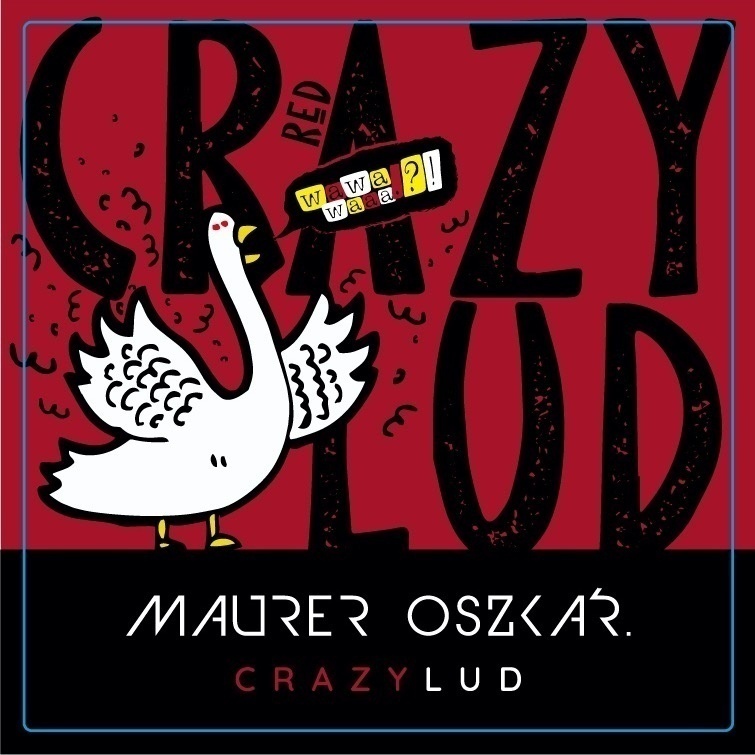
Red Wine , Organic
Kékfrankos; Cabernet Sauvignon; Kadarka;
12.4%
0.5 g/l
7.93 g/l
Kékfrankos; Cabernet Sauvignon; Kadarka;
12.4%
0.5 g/l
7.93 g/l
“Lud” means Goose in Hungarian and Crazy in Serbian. There’s an old Hungarian expression, “Ha lúd, legyen kövér!” that literally translates to “If it’s a goose, let it be fat.” In other words, if you’re going to go big, go big in all respects. The core of the 2022 blend is Kékfrankos, Cabernet Sauvignon, and Kadarka. Everything is fermented separately (2-6 days in open vats) and then blended and aged for one year in used 500L Hungarian oak. There’s meatiness from the Kékfrankos, grip and drive from the Cab, and elegance from the Kadarka for balance. It can take a chill, but doesn’t require it. It’s light and refreshing, but not glou-glou. It’s also not rushed to market and instead allowed solid lees aging time to become stable. Bottled unfined and unfiltered by gravity with zero additions.
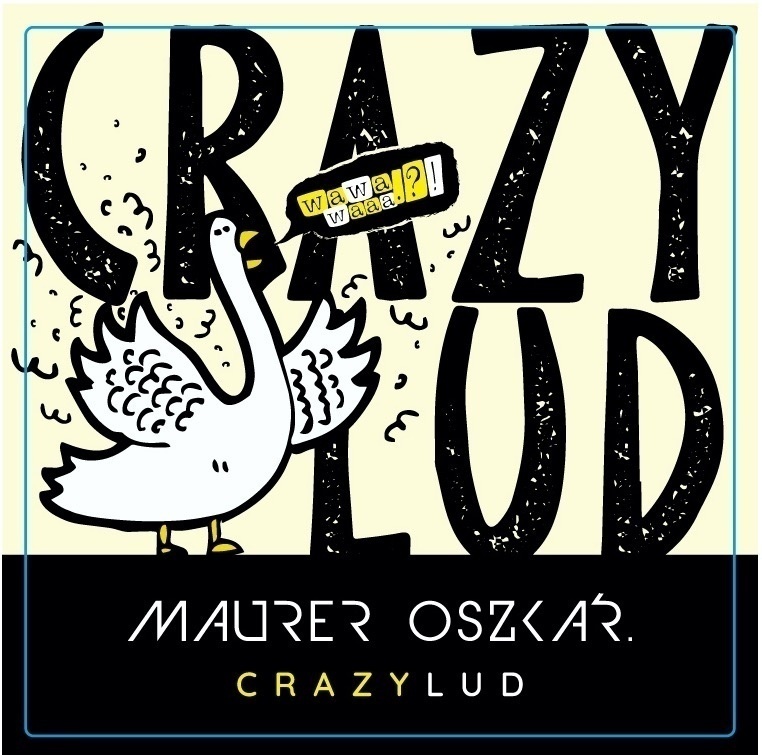
White Wine , Organic
Olaszrizling; Bakator; Slankamenka; Szerémi Zöld; Muscat à petit Grain;
10.5%
7.59 g/l
6.63 g/l
Olaszrizling; Bakator; Slankamenka; Szerémi Zöld; Muscat à petit Grain;
10.5%
7.59 g/l
6.63 g/l
“Lud” means Goose in Hungarian and Crazy in Serbian. There’s an old Hungarian expression, “Ha lúd, legyen kövér!” that literally translates to “If it’s a goose, let it be fat.” In other words, if you’re going to go big, go big in all respects. This pretty much sums up this wine. This is a mixed field blend with 1-2 days of maceration and relatively short 6 months of aging in tank. It’s a table in the best possible use of that term. The Grašac is the foundation, the Bakator and Slánkamenka add texture and weight, the Szeremi Zöld adds acidity and aromatics. Picked ripe at 10.5% alcohol, it’s a celebration of local grapes done in a way that everyone can enjoy and afford to drink everyday. Bottled unfined and unfiltered by gravity with zero additions.

White Wine , Organic
Olaszrizling; Muscat à petit Grain;
11.42%
0.83 g/l
6.54 g/l
Olaszrizling; Muscat à petit Grain;
11.42%
0.83 g/l
6.54 g/l
This 57-year-old and small berry clone bush-trained 1 hectare vineyard was Oszkár’s great-grandmother’s dowry. The vineyard borders the Szelevényi nature reserve by only a 3 meter wide road. The wildlife and cover crops nearly mimic the forest. Oszkár also remembers his grandfather saying that Olaszrizling needs time with the skins in order to survive. Back then, there were no additions to the wines and Oszkár is keeping with both traditions. 7 days on the skins followed by 12 months in a 1340 liter barrel. He’s also fond of describing this wine as grease and motor oil for the soul even though he prefers only man and horse in the vineyard. Wine from Fodor encapsulates the farming and the cellar from these older generations and has great significance to Oszkár. Bottled unfiltered by gravity with zero additions.

Red Wine , Organic
Kadarka;
11.2%
0.98 g/l
7.36 g/l
Kadarka;
11.2%
0.98 g/l
7.36 g/l
This is the grape that brought us down into Serbia in the first place. The parent grapes are thought to be Papazkarasi originating from the border between Bulgaria and Turkey and Skardarsko which is native to the border area between Albania and Montenegro. Ottoman wars pushed Kadarka up into the Hungarian Kingdom and spread into modern Romania, Slovakia, and Croatia. At one point it made up around 60% of all red plantings but fell to below 1% by the end of Communism due to it not being fit for industrial farming. Oszkár and a handful of other growers like Heimann & Fiai, Bott Frigyes, Grál, Vaskapu, Sziegl, and others are bringing it back to life along with dozens of other pre-phylloxera clones. Maurer’s version is a benchmark for us. It’s essentially the youngest vines from years of massale selections from plantations dating from 1880-1912. Bush trained, very low yields (.5 kg), a touch of botrytis (which he embraces), destemmed, open vat fermented, two punchdowns a day, and then barreled down to 350 L used Hungarian oak for 12 months. Unfined, unfiltered, and with a small addition of SO2 (25ppm) at bottling.

Red Wine , Organic
Kadarka;
12.9%
1.3 g/l
7.72 g/l
Kadarka;
12.9%
1.3 g/l
7.72 g/l
The 1880 vineyard is the oldest known vineyard of Kadarka in the world. Planted in Pannonian sand, bush trained, and surrounded by fruit trees, they look like old hands reaching out of quicksand. Only farmed by hand and horse. Similar to the 1912 planting, this site has undergone generations of massale selection that has resulted in very thick skins which is rare for Kadarka. According to Oszkár, it needs to be constantly tweaked and worked on like a high performance race car. There’s also a little Vadfekete in the vineyard (botrytis resistant and dark berry) as well. Fermented with native yeast in open vat, barreled down to old Hungarian oak, and bottled unfined and unfiltered. This wine has an intense concentration of flavor and advanced texture for its age. This is markedly more expensive, but only made in select vintages and is the pride and joy of the estate.

Red Wine , Organic
Kadarka;
14.5%
1.17 g/l
8.92 g/l
Kadarka;
14.5%
1.17 g/l
8.92 g/l
As we were walking along the streets of Sremski Karlovci, Oszkár told us that it pains him that there’s “so much history but so little identity” here at the moment. This was a village that once boasted over 500 cellars devoted entirely to local sorts, notably Kadarka, and now there are barely 27 cellars showcasing 95% international grapes. He even noted a few of these beautifully ornate protruding windows designed to highlight how many barrels were for sale by hanging a correlating number of grape clusters. This wine is a sine qua non for what’s been forgotten in this area. Largely sourced from the 1st class Nagy-Krisztus vineyard with a little from Krisztus, this is hyper concentration 250 grams per vine botrytis afflicted Kadarka. Picked nearly overripe, it then spends 2 weeks on the skins followed by a year in barrel. Bottled unfiltered by gravity with zero additions. Oszkár is a firm believer that 90% of harmful oxidation in sulfur free wines is caused during bottling. So while gravity and filling with small hoses is 4 times slower and more labor intensive, it’s worth it.

Red Wine , Organic
Kadarka;
13.6%
0.7 g/l
8.48 g/l
Kadarka;
13.6%
0.7 g/l
8.48 g/l
We visited this part of the Krisztus Vineyard in April 2022. Initially we thought we were passing through some older abandoned vineyard. Oszkár pointed at it and said these are mutant clones of Kadarka that only yield around 200 grams per vine. One of the first candidates for going un-pruned. This wine lives up to the main goal Oszkár sees in the Fruška Gora – there must be intense fruit first then acidity second. Super small clusters were lightly treaded and then left on the skins for 2 weeks followed by 16 months in oak barrels. It was bottled unfiltered by gravity with zero additions. Super ripe, super unripe, botrytis fermented dry, and utterly unique and delicious Kadarka.
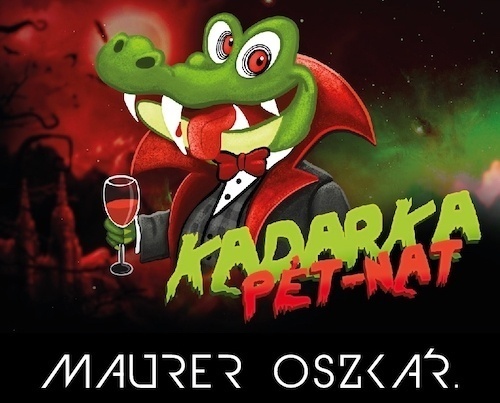
Sparkling Wine , Organic
Kadarka;
12.4%
1.8 g/l
6.6 g/l
Kadarka;
12.4%
1.8 g/l
6.6 g/l
These grapes are at the forefront of Oszkár’s permaculture experiments focused on un-pruned vines. Without pruning, the leaves become much larger and stronger. When there was an early frost a few years ago, the leaves cradled the clusters and protected them. The same thing occurred with shielding from sunburn. The idea of crop thinning and leaf pulling certainly has its place in promoting a singular ripe and volume heavy harvest, but Oszkár is convinced that while it might hit the right brix, it won’t be the most delicious because it’s not what the vine wanted. It’s also been a few years since this experiment began and a significant portion of the 2024 harvest was from vines growing up trees. This is the kind of symbiosis he’s been looking for despite added labor and lower yields. Despite being non-disgorged, the pressure is under control when opening and the sediment rests at the bottom of the bottle. There’s a special wildness to this Kadarka especially in the absence of botrytis and the resulting longer élevage in the dry still wines.
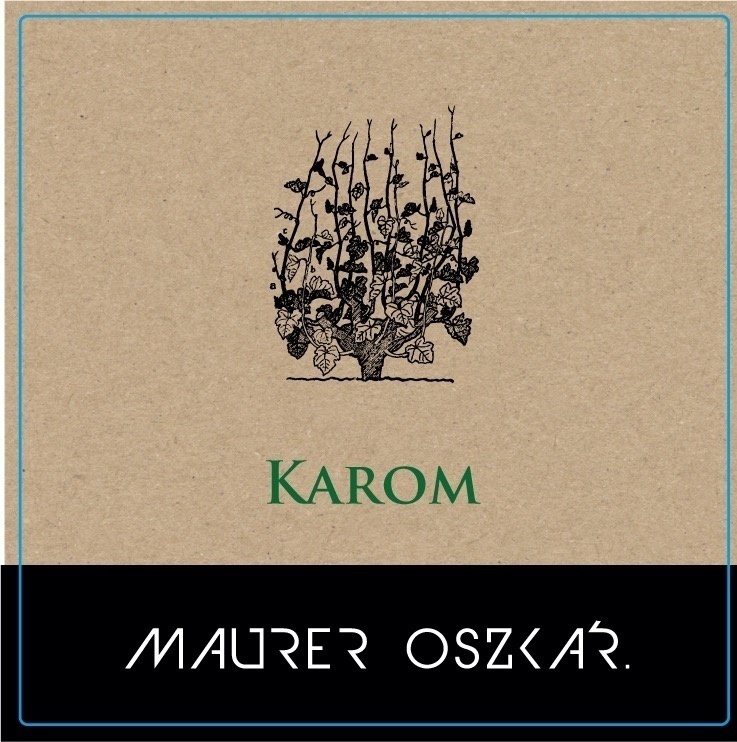
White Wine , Organic
Szerémi Zöld; Bakator; Muscat à petit Grain; Mézes Fehér;
12.6%
0.87 g/l
6.45 g/l
Szerémi Zöld; Bakator; Muscat à petit Grain; Mézes Fehér;
12.6%
0.87 g/l
6.45 g/l
This is a remarkable field blend from Nagy-Krisztus, one of the Grand Crus from the Szerémi wine region dating back to 1452. The name “Karom” is what this region was called up until 1540 and what is today called Sremski Karlovci. Picked together, co-fermented, 3 days of skin maceration and aged for 16 months in clay amfora. The blend is roughly 53% Szerémi Zöld, 19% Bakator, 19% Tamjanika, and 9% Mézes Fehér. The Bakator brings body and spice, the Mézes Fehér brings honey and concentration, the Szerémi Zöld brings acidity and lift, and the Tamjanika brings aromatics and even more acidity. This is like the great great grandfather of the Crazy Lud White in its conception, but coming from one special 1st class site, much longer élevage, and only made under the best conditions. Only 1400 liters were made from 4500 vines overlooking the Danube River.

Red Wine , Organic
Kékfrankos;
12.3%
0.5 g/l
6.75 g/l
Kékfrankos;
12.3%
0.5 g/l
6.75 g/l
This is a rare bit of something extra. Normally all of the Blaufränkisch goes into the Crazy Lud Red. This vintage was so healthy and productive that there was little leftover that didn’t make the final blend. Sourced from volcanic vineyards in the Fruška Gora, it’s a combination of a middle harvest and a super overripe harvest. It was then open vat fermented with 5 days of skin contact followed by 15 months in smaller format oak barrels. This is a rare opportunity both in this being available and in the limited amount we have to see Oszkár’s handling of it.

Sparkling Wine , Organic
Szerémi Zöld; Muscat à petit Grain; Bakator; Mézes Fehér;
12.2%
7.5 g/l
6.6 g/l
Szerémi Zöld; Muscat à petit Grain; Bakator; Mézes Fehér;
12.2%
7.5 g/l
6.6 g/l
The back label only serves to make the Serbian authorities happy and gets us the export paperwork we need. The actual wine is a Mézes Fehér fresh base wine – no maceration and simply pressed into tank. This ages for a year until roughly 15% of 6-day skin contact Olaszrizling must is added to start the secondary fermentation. Oszkár decided not to disgorge and leave the fine lees in the bottle. It therefore needs a little TLC before drinking. The best way to do this is to chill it upside down and have all of the lees collect in the neck. It’s crown capped, so just put it into a bowl of water upside down, open, blow out the lees, put back upright, and you’re
ready to go. It’s extra brut in terms of sugar (less than 2 g/l), it’s got plenty of stuffing and the bubbles are traditional method rather than pét-nat. Once disgorged, it’s lost its protection and is best consumed in one go.

White Wine , Organic
Mézes Fehér;
13.7%
2.88 g/l
7.34 g/l
Mézes Fehér;
13.7%
2.88 g/l
7.34 g/l
This is our third vintage of this grape and happily the third time I’ve had to write something completely new about it. Mézes Fehér, literally, “honey white” is typically able to contract a ton of botrytis without dropping acidity. The 2018 had around 20% botrytis infection, fermented on the skins for 7 days and aged in large Hungarian oak. The 2017 was aged under flor with two weeks of maceration. The 2019 by contrast, has much less botrytis, only spent 24 hours on the skins, and had zero flor. It’s ripe, aromatic, structured, and in many straddles the divide between the 2018 and 2017. Bottled unfiltered with zero additions.
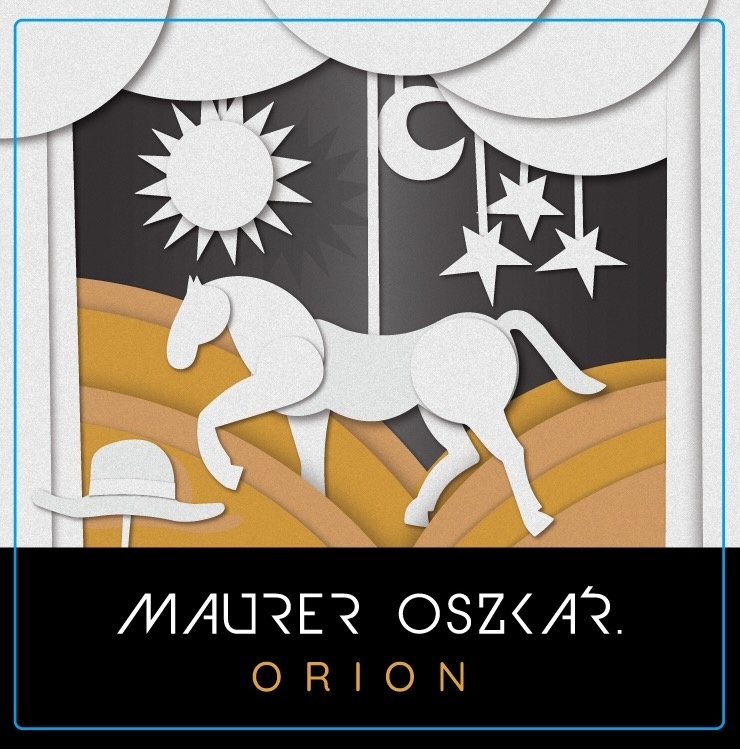
White Wine , Organic
Mézes Fehér; Furmint;
13.5%
2.05 g/l
6.72 g/l
Mézes Fehér; Furmint;
13.5%
2.05 g/l
6.72 g/l
Mézes Fehér, literally, “honey white” is able to contract a ton of botrytis without dropping acidity. Sourced entirely from the Krisztus vineyard in the Fruška Gora, this vineyard was completely forested with virgin soils when Oszkár purchased it in 2006. This 2022 was exclusively from un-pruned vines and surrounded by forest and riddled with seashells and sand overlying volcanic bedrock. With about 10% botrytis, the grapes were macerated for 14 days, and then aged for 12 months in barrel under a veil of flor. The bungs were completely sealed with beeswax. This is the magic of botrytis. How could something with this burnt orange color without added SO2 not be oxidized past the point of no return?

Red Wine , Organic
Cabernet Sauvignon;
13.8%
0.56 g/l
7.43 g/l
Cabernet Sauvignon;
13.8%
0.56 g/l
7.43 g/l
This is much less about grape, and much more about the Srem wine region and botrytis. This pulls from the Subotica region (Fodor vineyard) in the sandy north and the volcanic soils near the Danube in the Fruška Gora appellation. The fruit (mostly Cabernet Sauvignon of all things) was harvested throughout November with as much healthy botrytis as they could find. Oszkár believes that regardless of variety, enough botrytis turns red grapes into rosehips and forest fruits. It also eats up the tannins and adds a ton of acidity. The majority is simply basket pressed into barrel while a smaller portion is semi-carbonic to retain some freshness. Unfined, unfiltered, zero machines, and bottled with gravity.

White Wine , Organic
Kövidinka;
9.5%
9.28 g/l
6.26 g/l
Kövidinka;
9.5%
9.28 g/l
6.26 g/l
Planted in 1925 in what looks like pure beach sand, the combination of a super resilient local grape variety and low disease pressure make it one of the best price to quality ratio wines from the area. We’ve heard it described fondly as green apples meets rich mineral spa water, but with just 6 days of skin, it almost smells like a dead ringer for Spanish cider meets something umami and otherly. With 6 months in 500L barrel, there’s an additional spice and concentration despite the less than 10% alcohol. In some years most of this finds its way into blends, but in exceptional vintages we find it all on its own. Pungent, vibrant and yet pretty effortless to drink. Bottled unfined and unfiltered by gravity with zero additions.

Dessert Wine , Organic
Furmint;
14%
87.19 g/l
7.08 g/l
Furmint;
14%
87.19 g/l
7.08 g/l
This is a first from Oszkár and very much reflective of his desire to find his own way through the wine world. There’s already a very similar product called “Bermet” in Serbia. It’s essentially a predecessor to Vermouth. While likely originating somewhere in India or China, the mixing of wormwood, herbs, spices and some sort of distillate started in the East and made its way West. The modern day versions are overly fortified and generally not of a quality Oszkár wishes to associate. There’s also a very old style of wine in neighboring Hungary called “Ürmösbor,” literally translating to “wormwoodish.” This style dates back in the 15th century over two hundred years before Vermouth came to Turin in Italy. Wormwood is also the German word “Wermut” which is where the French and Italian pronunciations come from as well. All that being said, Oszkár didn’t want to create a Serbian Ürmösbor either. In comes “Sott,” a name that has zero history behind it, but was instead the first letters to the Harry Styles song "Sign of the Times" that he was listening to trying to find a name. It is not fortified, but is instead 100% late harvest Furmint, mostly dehydrated with some botrytis macerated with wormwood, herbs and spices all foraged from the hills of the Fruška Gora. All barrel fermented and aged, it’s incredibly unique, oddly familiar at times, and without added liquor, still very much alive in the bottle.

White Wine , Organic
Szerémi Zöld;
10.7%
0.94 g/l
6.15 g/l
Szerémi Zöld;
10.7%
0.94 g/l
6.15 g/l
Planted in 1909, this was once one of the most well-known and high quality grapes in the then Hungarian Empire up until phylloxera nearly wiped it out. Whether originating in current day Romania (Arad/Banat) or in the area now shared by Croatia (Srijem), Serbia (Srem) and Hungary (Szerém), it’s still incredibly rare. In Hungary, there is a reported 0.1 ha. We know there’s more in Romania (aka Grünspitz) because we import one of the two existing vineyards courtesy of Edgar Brutler. Maurer arguably has the oldest vines which just turned 115 years old this year. The grapes were hand harvested, destemmed, left on the skins for 3 days, and then fermented and aged in 15 year old 350L oak barrels for 12 months. Bottled by gravity with zero additions. This is more in the vein of Karom in terms of skin maceration (much lighter), and also devoid of botrytis. This is one of the most naked in terms of grape to place among Oszkár’s white wines.

White Wine , Organic
Muscat à petit Grain;
14.4%
2.58 g/l
5.92 g/l
Muscat à petit Grain;
14.4%
2.58 g/l
5.92 g/l
Tamjanika is a Serbian clone of Muscat Blanc à Petits Grains, but has taken on a whole new life here. Planted in the volcanic, limestone and clay of the Remete vineyard, it’s just a mere 200-300 meters from the Danube River. It had been fallow for 50 years and never treated with any kind of synthetic treatment ever. Picked with 15% botrytized berries, it was then fermented in open vats, macerated for 5 days, and then barreled down for 16 months before being bottled unfiltered with gravity with zero additions. In contrast to the floral descriptors we often use to describe Muscat, Tamjanika translates to “incense.” Dense and pungent, this is like walking into a smoky room not a flower shop.
